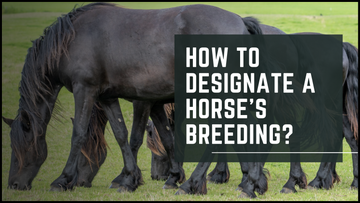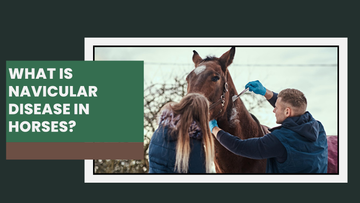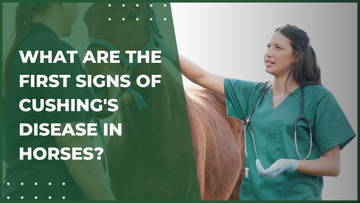Ever thought how often do horses need new shoes? Well, horses can't just go shopping for a new pair of horse shoes, so their farrier chooses when it's time for a fresh set. If your horse has been running around a lot or appears to be clumping more than normal, it might be time for new shoes.
Shoeing a horse might not have the same excitement as picking out new sneakers, but it's just as essential to ensure your horse stays comfortable, healthy, and ready to show off those amazing hooves.
So, how do you figure out when it’s time for a shoe change? Let's examine how often your horse should get new shoes and why it matters!
What is Horse shoes?
A horseshoe on horse might look like an uncomplicated piece of metal, but it plays a huge role in keeping your horse comfortable and healthy. Consider it like a pair of horse shoes, but for hooves! Just like we wear shoes to shield our feet, these sturdy, specially made shoes for hooves cover a horse’s fragile hooves from wear and tear.
The purpose of horseshoes is to control damage to the hooves while helping the horse’s movement, primarily on tough or uneven terrain. Without them, your horse might end up with sore feet, causing it harder for them to gallop, or walk comfortably as well.
Why Do Horses Need Horseshoes?
If a question like why do horses need horseshoes comes to your mind, then it’s because these little accessories do a lot more to make a horse’s hooves look nice. Horse shoes create vital role in ensuring the health and comfort of your horse.
But the question remains: do horse shoes hurt horses? The answer to it, is simply a no, as long as they're fitted properly. Horseshoes are made to support natural movement while protecting the hooves.
So, what is the purpose of horseshoes?
1. Horseshoes provided with cleats or studs offer perfect grip, making them ideal for navigating slippery or rough surfaces. This added feature is particularly critical for horses that work in various environments, such as muddy trails or snowy fields, assuring safety and resilience during movement.
2. Some horses suffer from hoof abnormalities like over or under-riding, which can provoke discomfort or lead to injury. Horse shoes help to manage these issues, permitting the horse to move more comfortably by delivering the necessary support for healthy hoof function.
3. Horses with illnesses such as laminitis or navicular disease usually require specialized horse shoes for added support. These shoes help reduce pain and alleviate signs, providing the same comfort that orthotics show humans, allowing the horse to perform better without pain.
4. Hooves can wear down quickly without proper protection, significantly in horses that perform serious labor. Horseshoes for ponies or working horses help maintain the integrity of the hooves, controlling rapid wear and providing they stay strong over time.
5. Horses are heavy and large animals that stress their hooves significantly. Horse shoes help evenly spread their weight across the hoof, minimizing the impact on joints and muscles, especially during activities like hopping or carrying weight, leading to better performance and less strain.


How Often Do Horses Need New Shoes?
When questions like how often do horses need new shoes revolve around your mind, it's noteworthy to remember that the answer can vary based on huge factors. Generally, horses need their shoes replaced every 6 to 8 weeks. However, this period of time can change depending on various reasons.
Shoeing a horse involves considering many elements, such as:
1. Growth Rate:
Some horses encounter faster hoof growth, meaning they might require new horse shoes sooner. Others may have slower-growing hooves, which could extend the time between reshoeing appointments.
2. Workload and Activity Level:
Horses involved in serious activities, such as sports or vast riding, put more wear and tear on their hooves. Horses with demanding workloads, like racehorses or working horses, usually need more regular reshoeing to preserve proper support and protection. For less active horses, reshoeing might be demanded less frequently.
3. Hoof Health:
The quality and health of a horse's hooves recreate a big role in how often they require reshoeing. Horses with weak or brittle hooves, or those with prone to hoof issues, may need shoes more often to prevent damage. Special hoof pads for horses can also add extra protection if the horse's hooves are mainly vulnerable.
4. Seasonal Changes:
In warmer months, for instance, spring, hoof growth tends to increase, which may need more frequent shoeing. In contrast, during the colder winter months, hooves grow more slowly, allowing for a more extended period between shoeing appointments.
5. Farrier's Recommendations:
Farriers are the experts who specialize in shoeing horses, and they offer the best source of advice on how often do horses need new shoes. Based on their experience and understanding of your horse's needs, they can also specify a perfect time to buy new shoe for your horse.
Do Racehorses Wear Shoes?

You might wonder, do racehorses wear shoes?, and the answer is always, yes! While race horses don't need shoes to compete, nearly every horse you see racing is wearing them.
Why? Because race horses run at amazing speeds on tracks made of softer surfaces, like turf or dirt. Even though these surfaces are smoother, the force with which a racehorse strikes the ground is massive, making it important for their hooves to be protected. That's where horse shoes come into action.
To control damage and make sure they have the right level of traction, most racehorses are shooed with aluminum shoes, which are more delicate than normal steel ones, however, still offer superior protection. This lighter weight helps decrease the overall load and supports the horse’s speed and stride.
Let's Understand the Reshoeing Process!
When it comes to maintaining a horse comfortable and making it perform best, reshoeing is a basic duty that needs expertise and care. So, what steps are involved in putting horse shoes back on your horse's hooves? Below are the steps

Step 1: Assessment of Hooves
It begins with the farrier examining the horse’s hooves. This includes evaluating their balance and how they move. Managing the horse walk or trot gives the farrier an understanding of any potential issues.
Step 2: Withdrawing Old Shoes
Once the inspection is complete, the farrier removes the aged horse shoes and trims the hooves. Special grooming tools like hoof knives and nippers help clear parts of the outer hoof wall, shaping the hoof to provide it stays healthy.
Step 3: Shaping and Trimming
After the hoof is trimmed perfectly, the farrier shapes the sole and the frog of the hoof and files it for a smooth and even surface. This step validates your horse's hooves are in the best shape and ready for the proper horseshoes for ponies or adult horses.
Step 4: Fitting New Shoes
Now here is the exciting part: clip on shoes for horses or traditional horse shoes are decided based on the horse’s demands. The farrier carefully nails the shoes to the hoof wall, ensuring they are properly fitted. The hoof wall is insensitive, so this process is pain-free for the equine.
Step 5: Finishing Touches
Finally, the farrier inspects the fit and ensures the horse is comfortable with its new shoes. These horseshoes help cover the horse's hooves, circulate weight evenly, and support its performance, fulfilling the purpose of horseshoes.
Final Thoughts
So, how often do horses need new shoes? The answer relies on many factors, including hoof growth, activity level, and whole hoof health. While every horse’s needs are diverse, keeping a regular program for shoeing a horse will help your horse be relaxed, protected, and perform at its best.
At The Epic Animal, explore our extensive collection of high-quality equine accessories, from durable lead ropes to bell boots and more, made and designed to meet the needs of both retailers and equestrian enthusiasts.
For more valuable insights, visit us and shop for the best equine tools and give your horse the care they deserve!


FAQs:
-
Do wild horses need shoes?
Wild horses don't need shoes because they live on natural, unpaved ground, and their hooves are toughened through constant movement. Unlike domesticated horses, they wear their hooves naturally.
-
What is a horse's shoe called?
A horse's shoe is simply called a horseshoe. It's a protective cover for the horse's hooves, usually made of metal, that helps prevent wear and injury during work or movement.
-
Is a horseshoe painful for a horse?
No, horse shoes are not painful if properly applied by a skilled farrier. They are nailed to the hoof’s tough outer layer, not the sensitive part, ensuring comfort and protection without causing harm.
-
How did horses survive before horseshoes?
Before horse shoes, wild horses lived in natural environments that toughened their hooves. Domesticated horses also survived without shoes, but it became harder for them to work on rougher or harder surfaces.
-
Who invented horseshoes?
The invention of horse shoes is attributed to the ancient Romans, who created early versions of protective hoof coverings. Over time, the design evolved into the modern horseshoe on horse we use today.
Read More Blogs:







